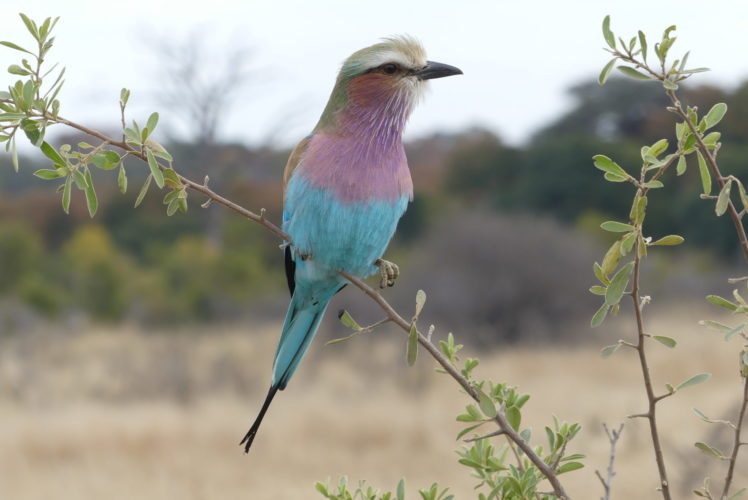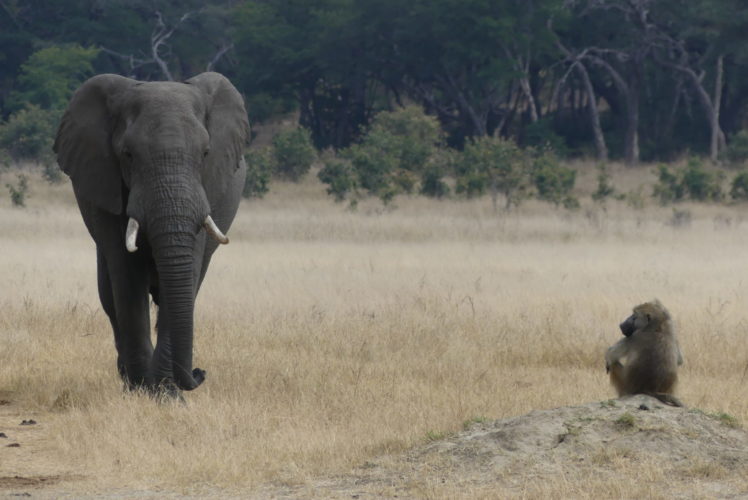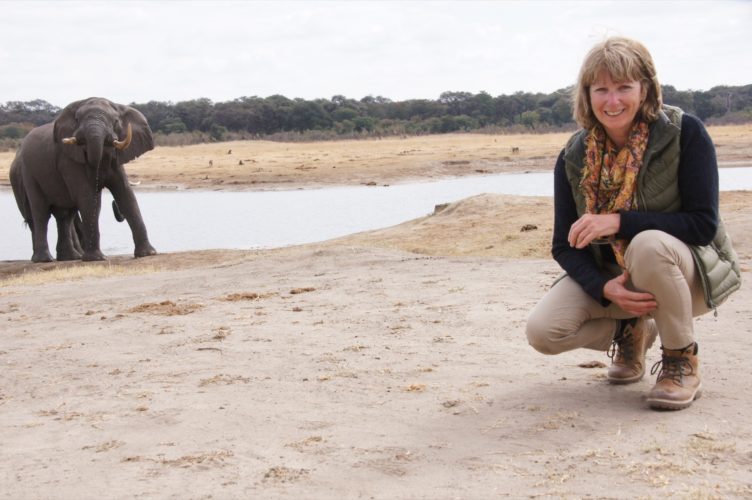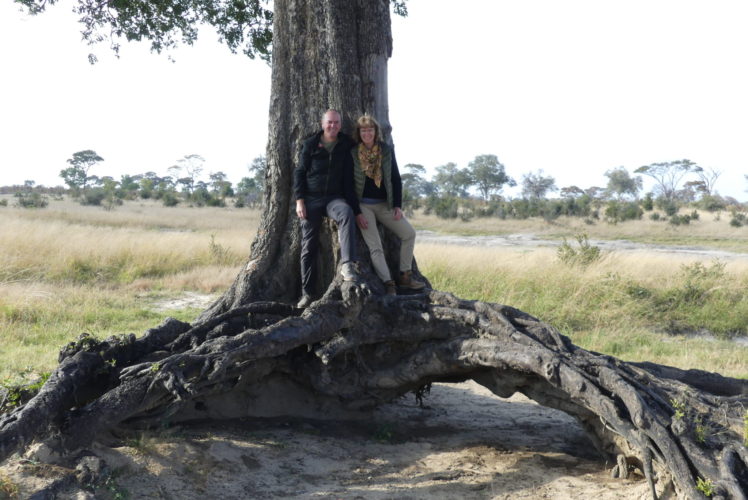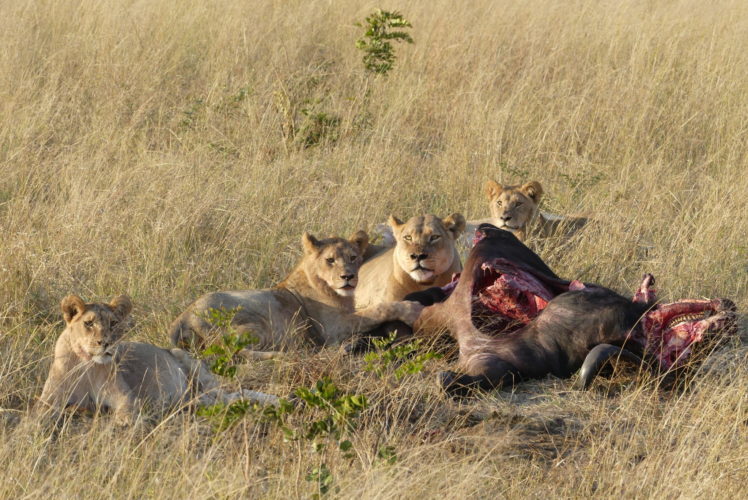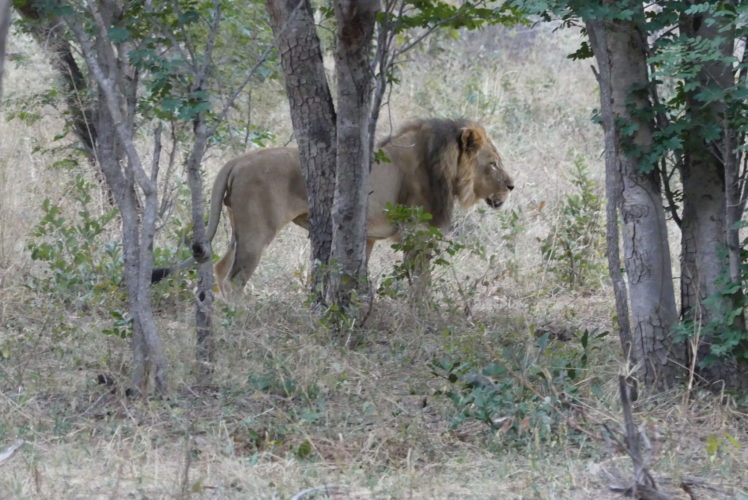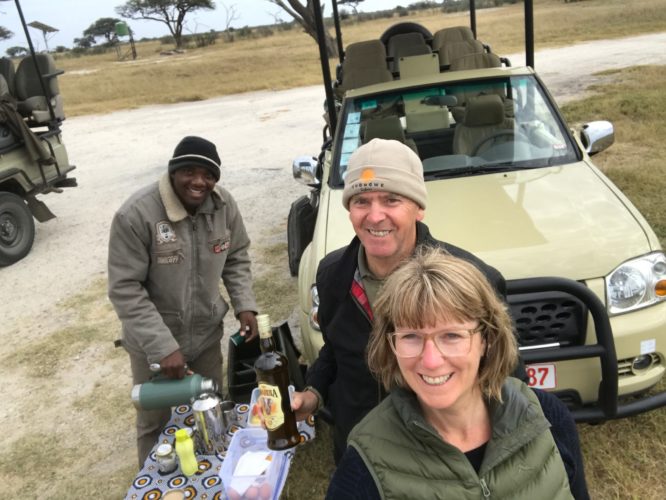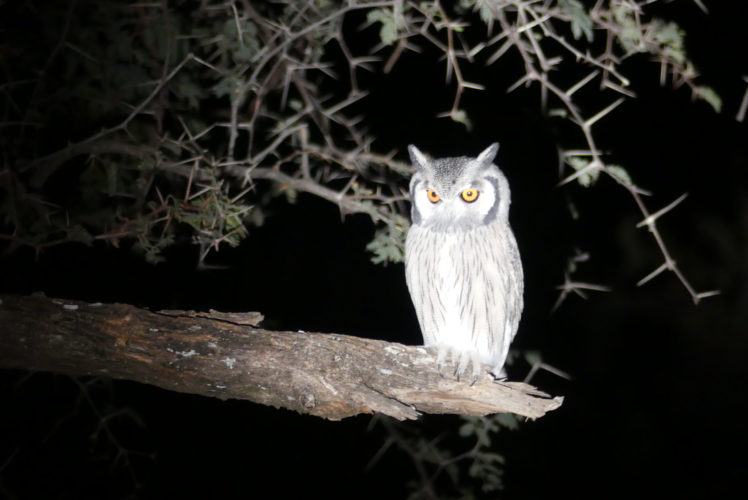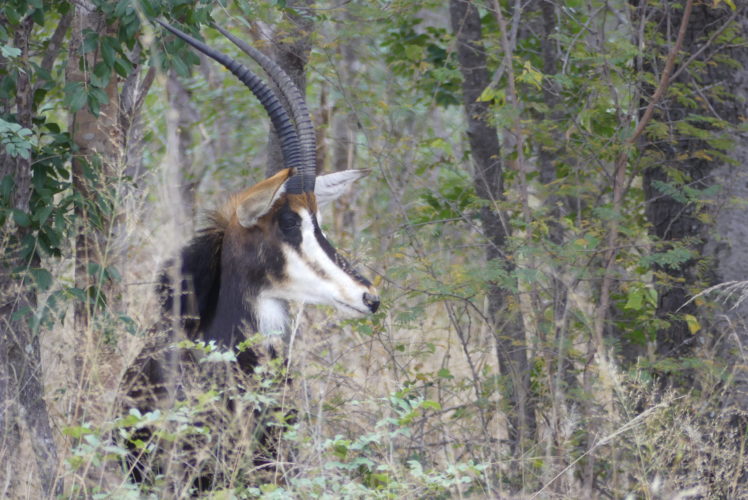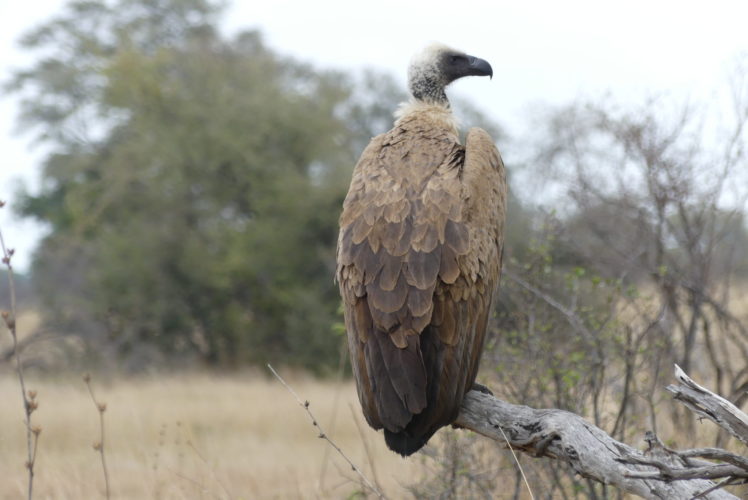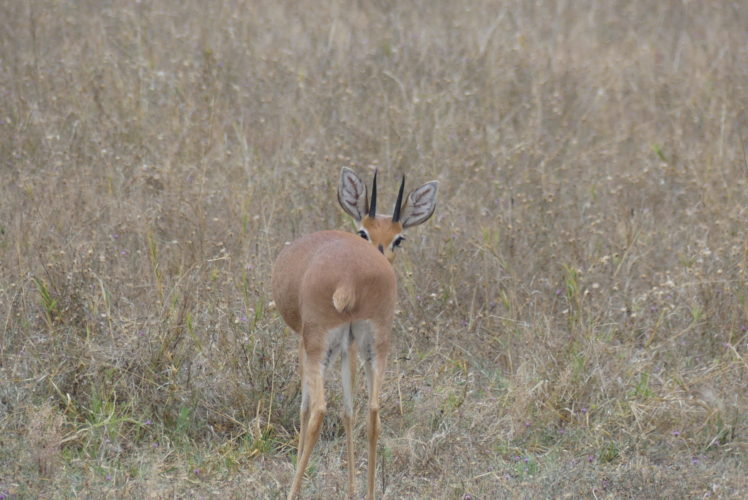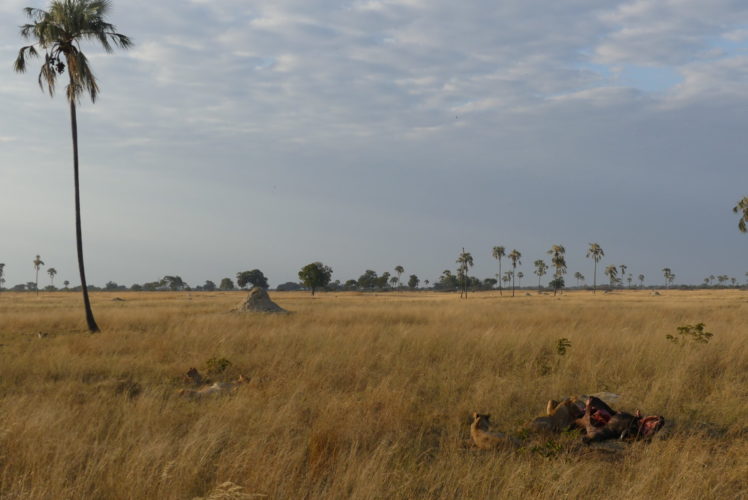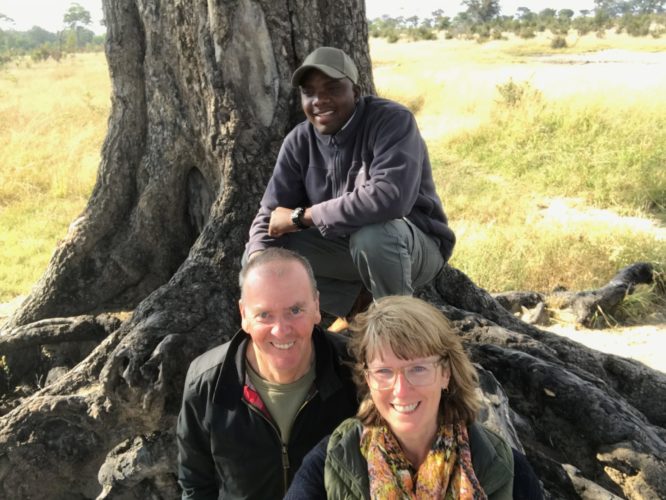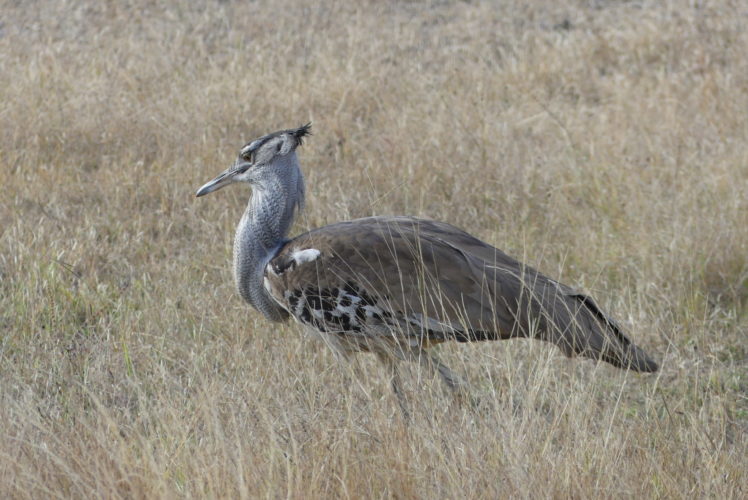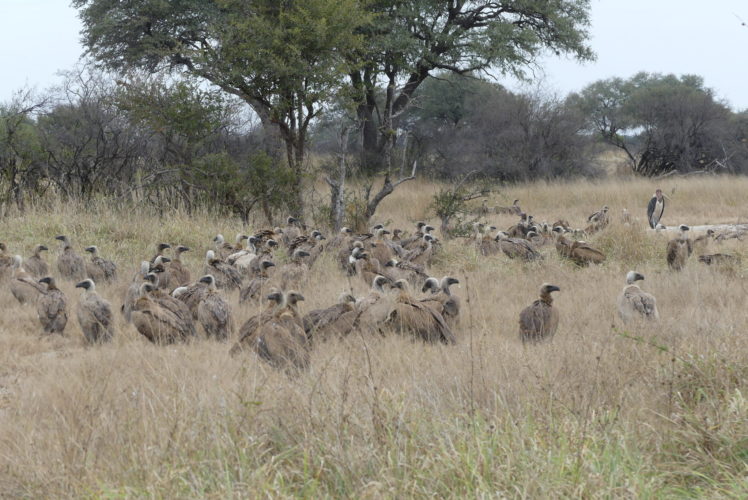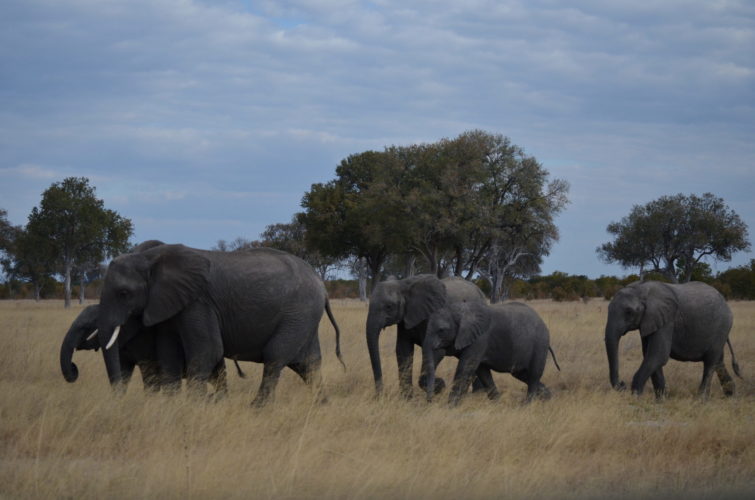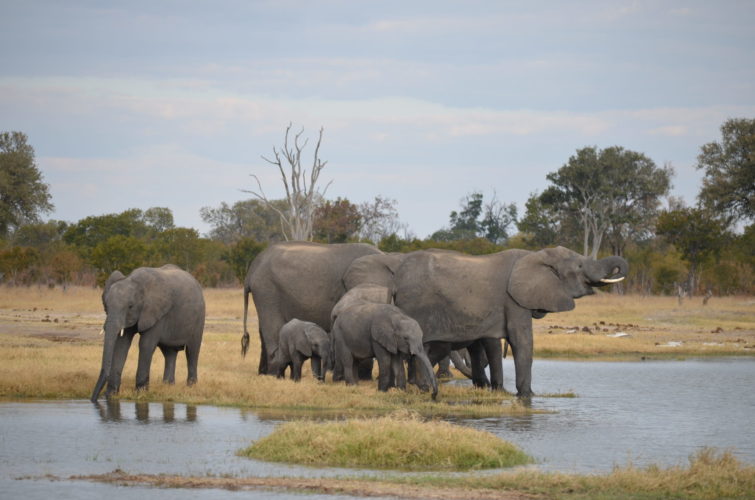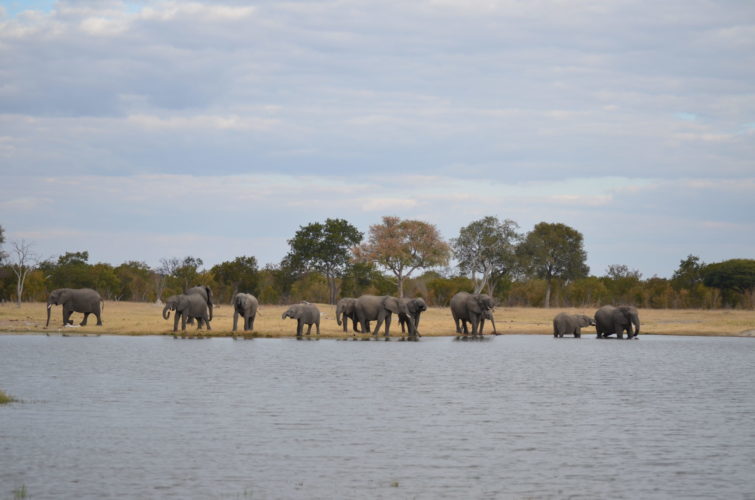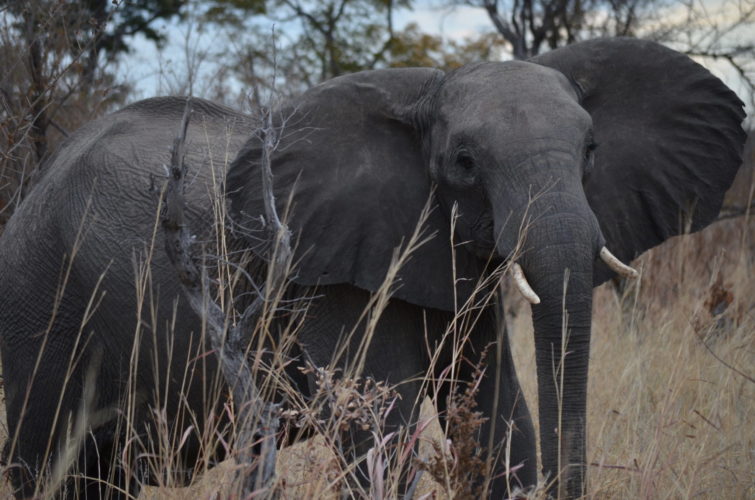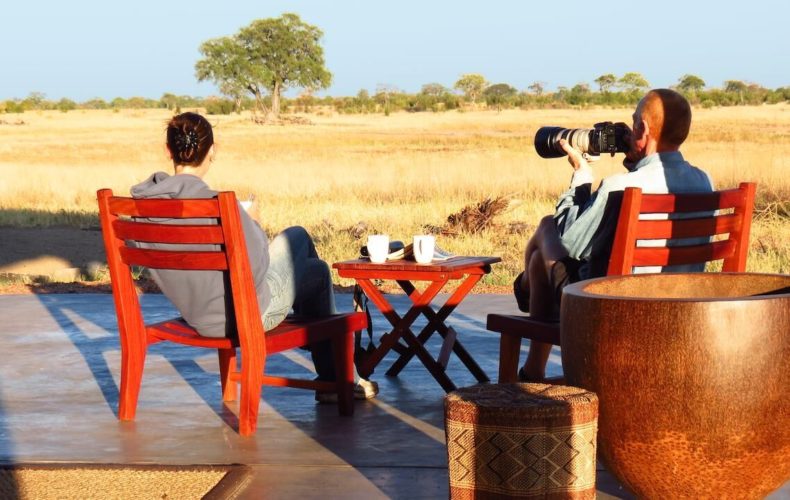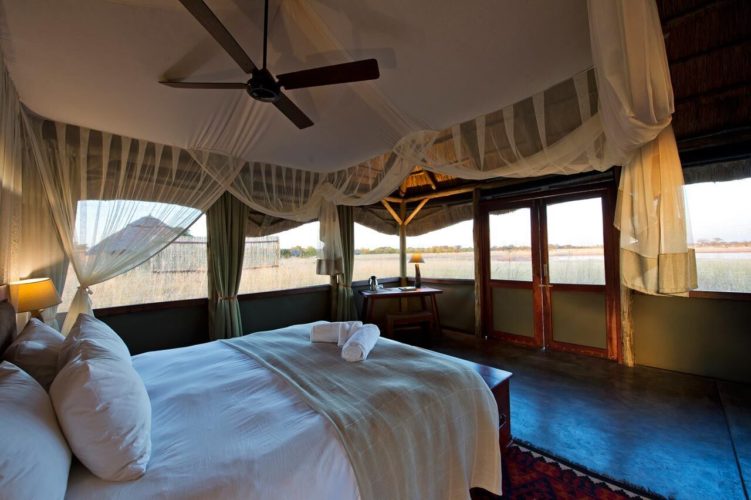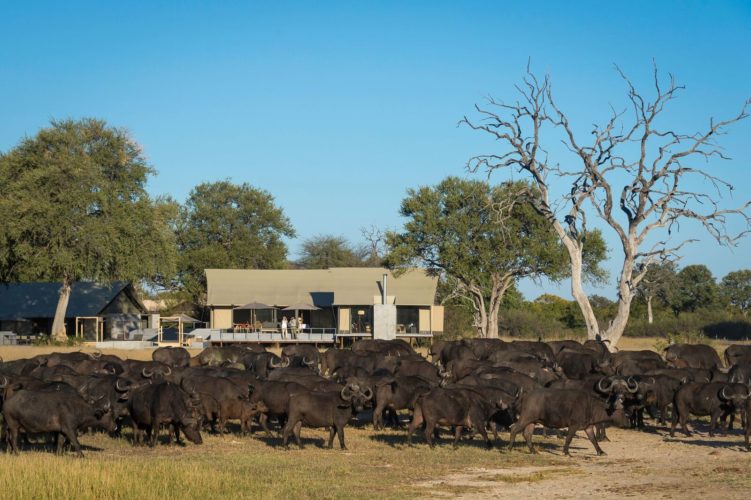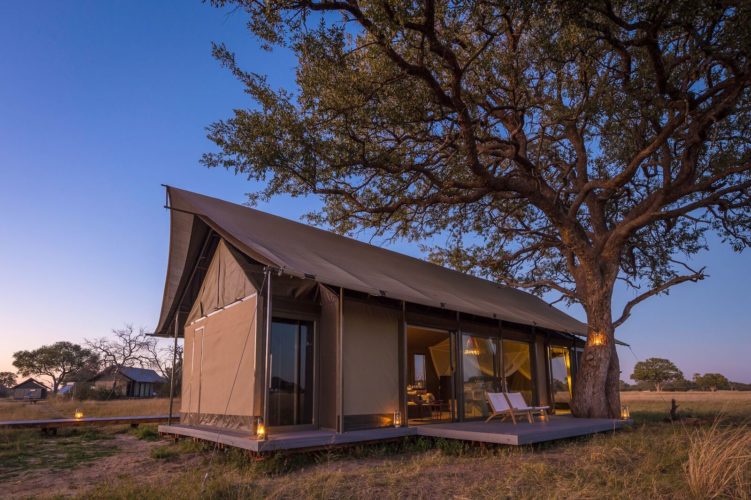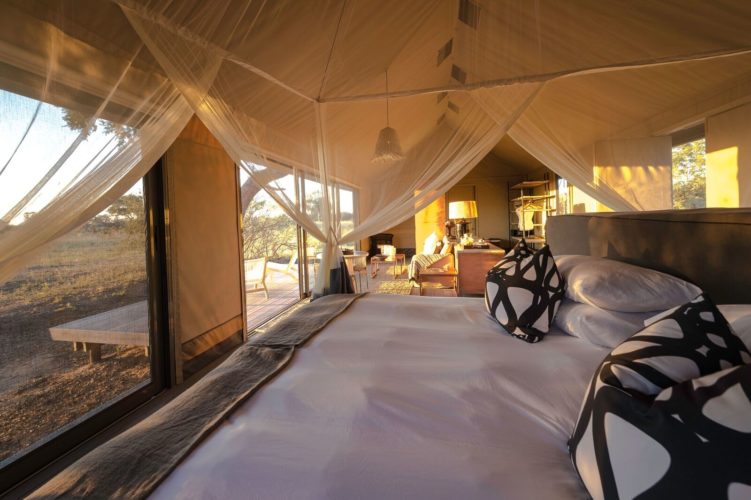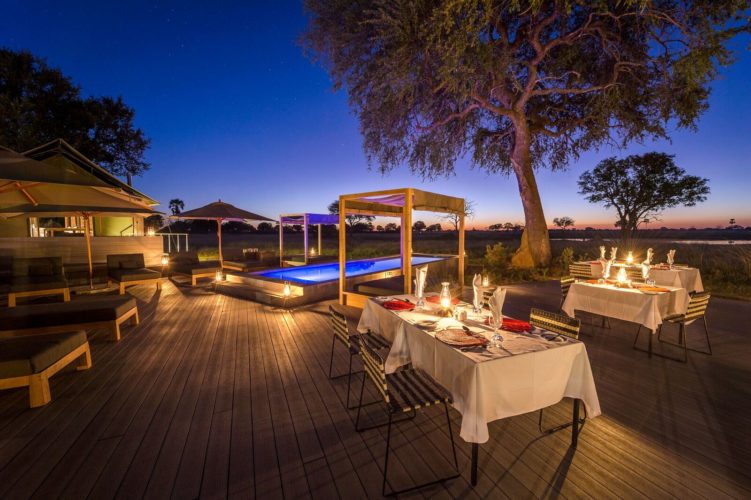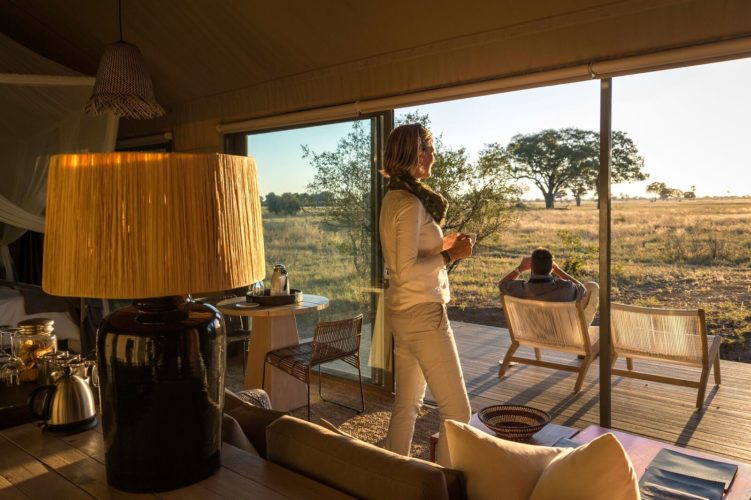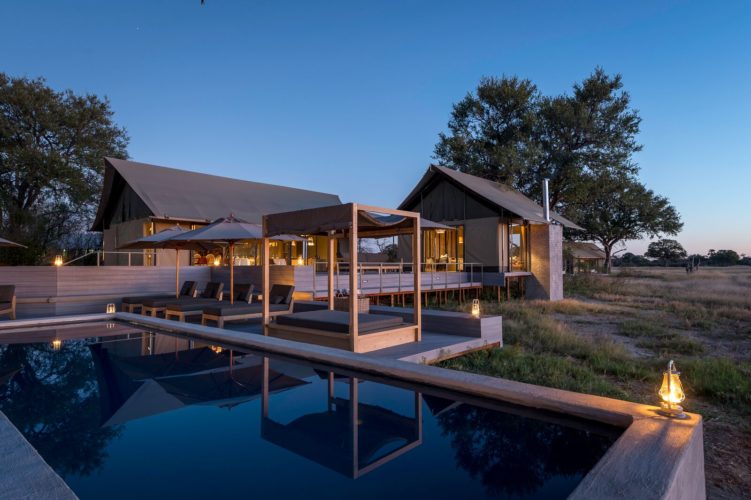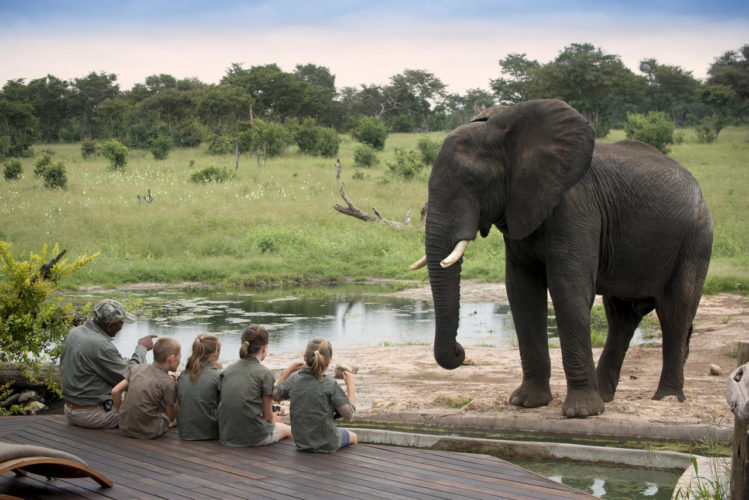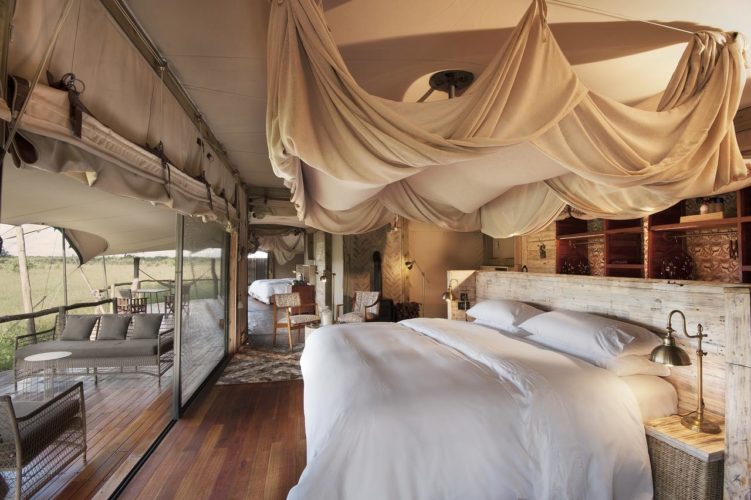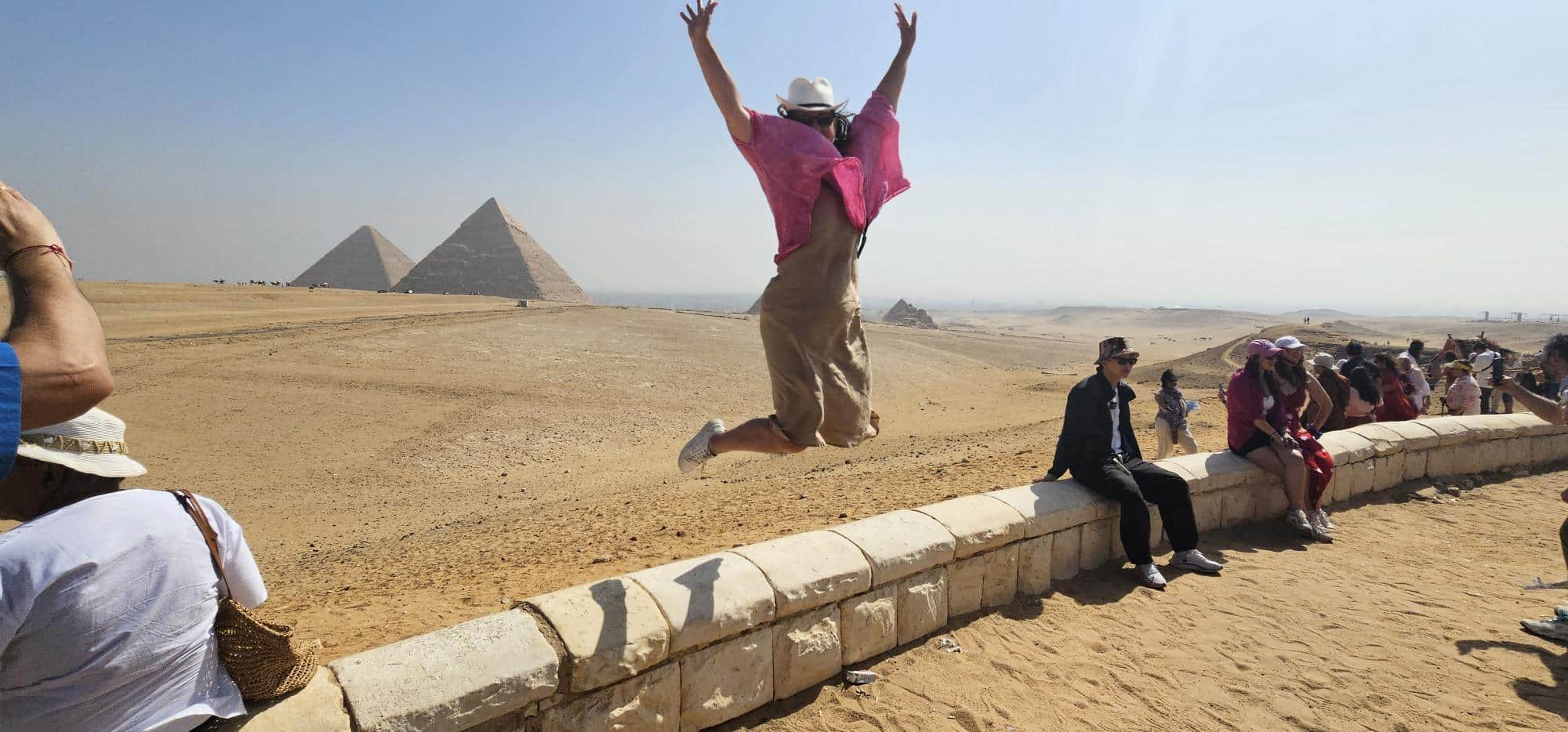Our guide to
Hwange National Park Safaris
African elephants roam free in Hwange National Park.
Hwange National Park at 14,500km² is Zimbabwe’s largest national park and home to some of southern Africa’s last great elephants, buffalo and sable herds. There are over 100 species of mammals including 19 large herbivores and 8 carnivore species. On top of that, birding safaris are brilliant with 400 species, though none endemic.
There are private concessions dotted around Hwange National Park and in these areas you experience a more immersive stay with less vehicle traffic and more tranquillity to savour the safari experience. It’s also exciting in private concessions to get out on night game drives where you see the various nocturnal species like hyena, porcupines, civets, genet cats and leopard if you’re lucky.
Game drives are offered morning and afternoon and some camps have full day safari options with picnic lunches. Walking safaris are conducted by highly skilled and fully licensed professional guides. Walking is best done in the morning when the air is cool and it is ideal for photography as the sun rises with spectacular light.
A number of accommodations in Hwange offer exceptional waterholes right in front of camp and others offer wildlife hides that allow you to get up close to the animals from the safety of specially designed blinds or hides. Some properties even offer mountain biking, in particular one of our favourite remote properties, Jozibanini. Read our Zimbabwe travel guide here.
In the Nehimba private concession there is a naturally occurring source of water that seeps through the sand. It is an ancient source and was once used by the San Bushmen. Today elephants visit to dig for minerals and water. On this private reserve you can also visit a hilly outlook and Mandavu Dam.
There is also a portion of communal land areas within Hwange directly linked with locals to make it a genuinely eco-tourism experience.
Many properties also offer the opportunity to visit communities and schools so they get a glimpse of rural life. You are shown around and introduced to the typical daily activities and if it is a school day, you can visit, meet the Headmaster and hear children sing traditional songs and see learning in action.
Hwange is home to The Painted Dog Conservation Centre, one of the most successful wildlife organisations in Zimbabwe today. They have effectively reintroduced and rehabilitated many wild dogs into the national parks across the country. The wild dog population diminished from 500,000 to just over 3,000 in 10 or so years for a number of reasons like hunting, snares, poaching, road kills and bounty hunters. Today, the centre is open for visitors to come and learn about the rehabilitation process and the importance of wild dog as a species that is only found in Africa.
What are you waiting for?
Let’s ChatTop Five Hwange Tips
- Take a drive, the National Park is home to the Big 5 plus giraffe, hippos, zebra and so much more.
- Hit the walking trails in Hwange to get up close with bull elephants and the smaller creatures of the bush.
- Truly immerse yourself in the culture of Hwange by meeting the locals so you get a glimpse into their daily lives.
- Enjoy a sundowner drink as the African sun sets over Hwange National Park’s beautiful landscapes.
- Visit the Painted Dog Conservation centre, and fall in love with the Wild Dogs of Africa.
Accommodation in Hwange National Park
Hwange National Park is home to stunning properties that are truly nestled in wilderness thanks to the huge land mass and mix of national park and private concessions. Camps are accessed either by road or light aircraft flights that run to a regular schedule. Sleeping under canvas is a must in Hwange because you really do get a sense of total immersion in the bush.
There are five star exclusive safari lodges in Hwange National Park like Linkwasha Camp and Little Makalolo to more rustic camps like Davison’s Camp and Vintage Camp that is based on the Painted Dog private concession area bordering Hwange.
Our favourites are run by passionate, highly qualified and experienced guides and conservationists like Camp Hwange and Somalisa. There’s also the stunning Nehimba, Bomani and Jozibanini run by a group of passionate professionals that focus on the wildlife experience with conservation at their core.
Best time to visit Hwange National Park
If your Hwange safari holiday is all about abundant wildlife, the best time to visit is dry season between July and October. The waterholes become magnets to animals, vegetation thins out and sightings come more easily.
If you are a birding enthusiast, migratory birds arrive in droves during the summer months of November to April. Wet season runs December to March and some properties close during this time and utilise it for refurbishment and updates.
Our favourite time to go is April to June when it bright blue skies are common, rain is rare, vegetation still has colour and lushness and many species have given birth to young. The heat is certainly not as oppressive either.
What are you waiting for?
Let’s Chat
